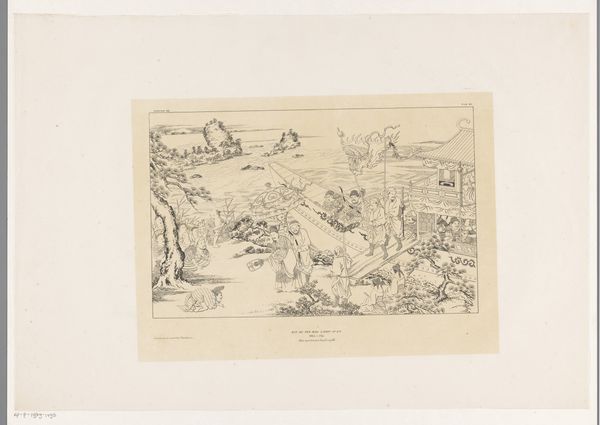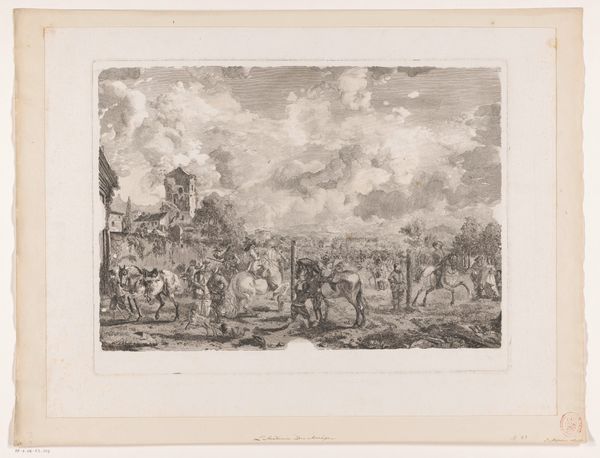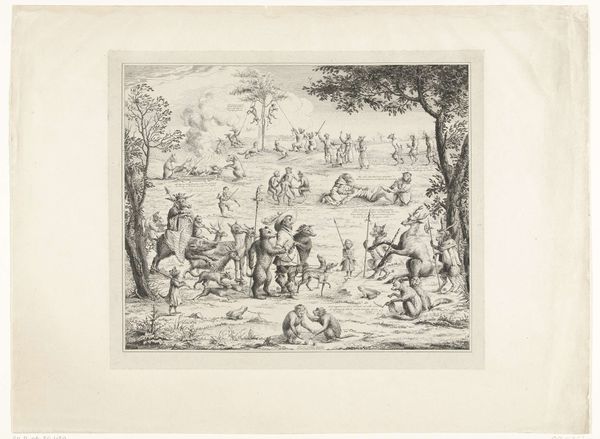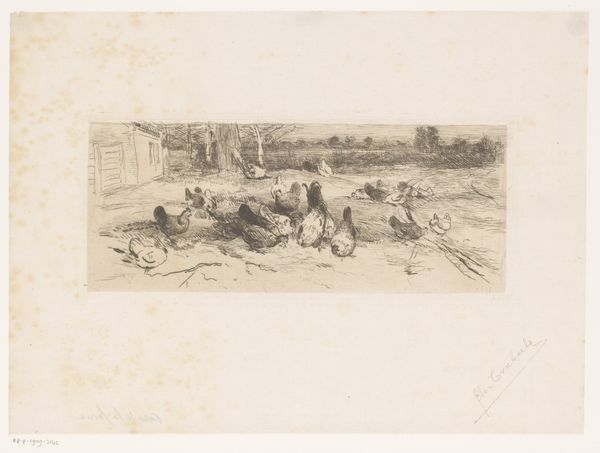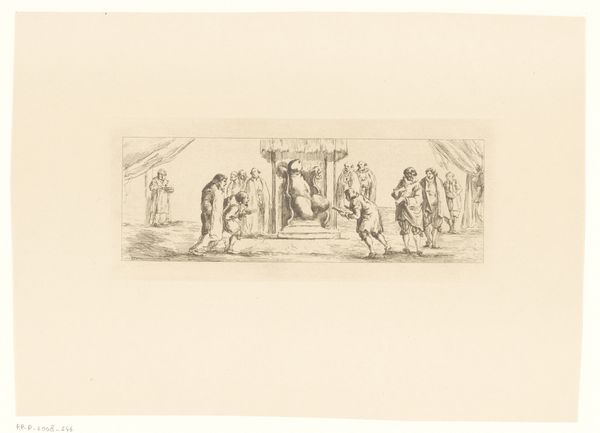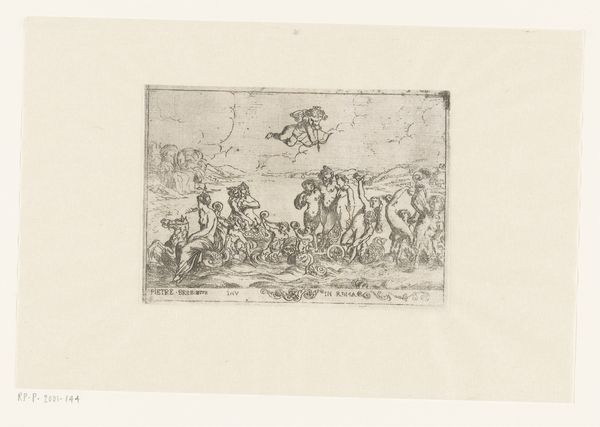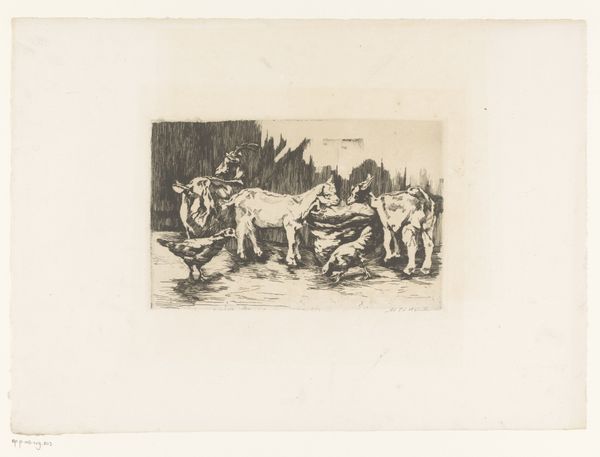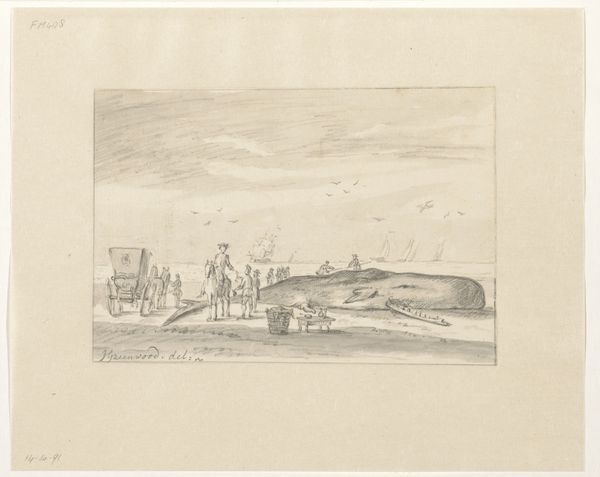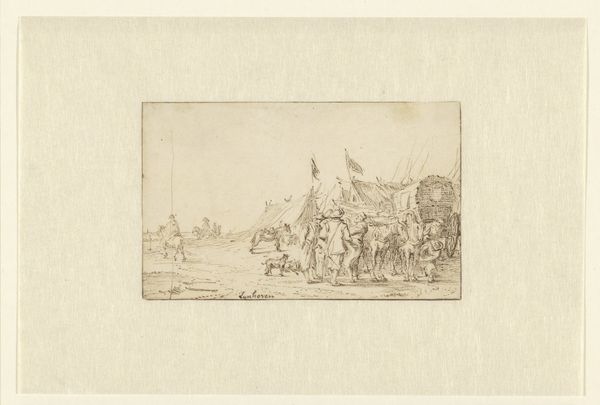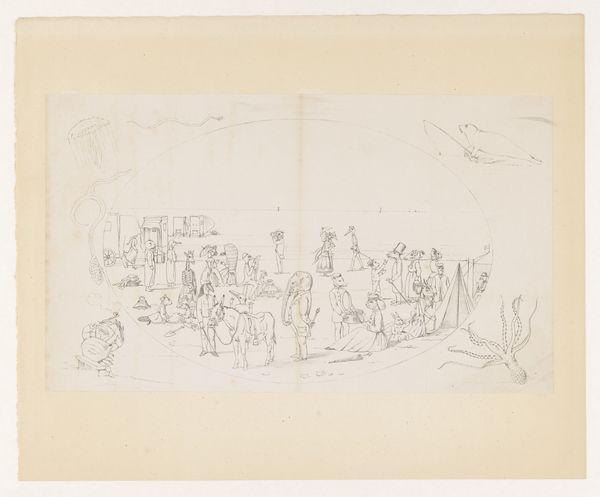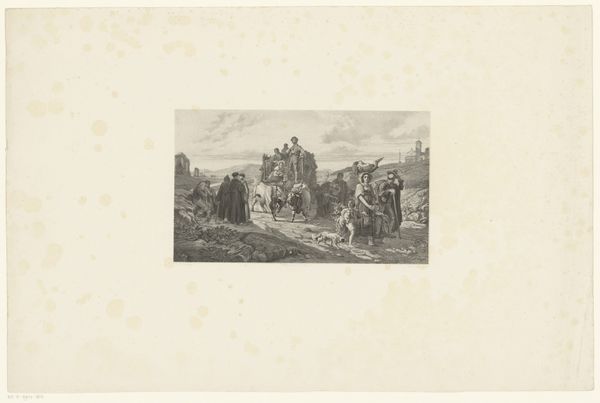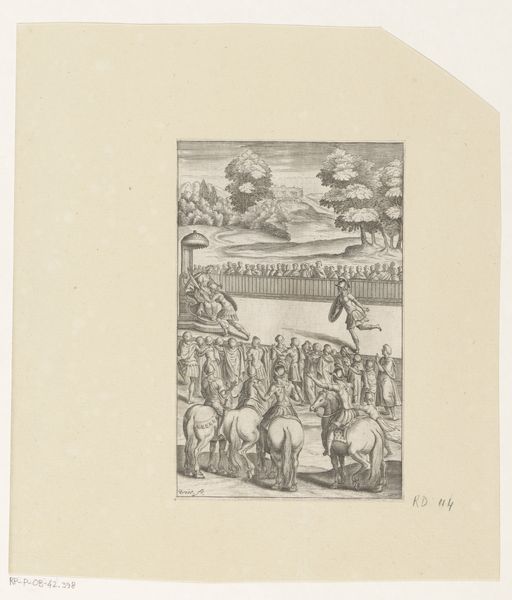
drawing, print, etching
drawing
16_19th-century
etching
landscape
etching
figuration
genre-painting
realism
Dimensions: height 182 mm, width 241 mm
Copyright: Rijks Museum: Open Domain
Editor: This is “Various Studies of Figures,” an etching by Edgar Alfred Baes, made in 1875. There's almost a scrapbook quality to it, the way the images are arranged. What's your take on a piece like this, given its context? Curator: Well, this kind of study sheet provides insight into the artist’s world and the visual culture they inhabited. Consider the date, 1875. Realism was a dominant force, a reaction against Romanticism’s idealism. Baes gives us glimpses of daily life and labour alongside more imaginative elements. We see landscapes and figuration in an unsentimental way, and his compositional arrangement of figures echoes popular print culture's visual economy. Why do you think artists made study sheets in this way? Editor: Practice, maybe? Or just documenting things that caught their eye? But it seems so… public somehow, knowing this would be seen. Curator: Exactly. It’s a negotiation between private exploration and a public display of skill. These prints circulated. They influenced tastes, transmitted ideas about labour, leisure, even the exotic – note those somewhat orientalist figures at the top. Baes, whether he intended to or not, was participating in constructing a visual understanding of the world for his audience. Does it change your understanding to think about this artwork circulating at that moment? Editor: Definitely. I was seeing it as just practice, but understanding that it shaped people's ideas at the time gives it a new weight. Curator: Precisely. It brings this intimate study sheet into a much wider socio-political sphere, doesn't it? Editor: Yes, I see that now. Thanks for shedding light on that. Curator: My pleasure.
Comments
No comments
Be the first to comment and join the conversation on the ultimate creative platform.
